Immersion Briefing Book

Ascension Leadership Academy - Silicon Valley



May 10th, 2023

Welcome to your Immersion!
This Immersion Book is the guide to your Immersion meetings.
In it, you will find:
● a refresher on Immersion Learning


● an introduction to your Immersion teams
● an outline of who you will be meeting, along with relevant background info and context


2
Immersion Learning
Earlier, we introduced the trifecta that unlocks the power of Immersion: mindset, practices, and experiences. Consider these as you prepare for, meet with, and reflect upon the exchanges with your Immersion hosts.
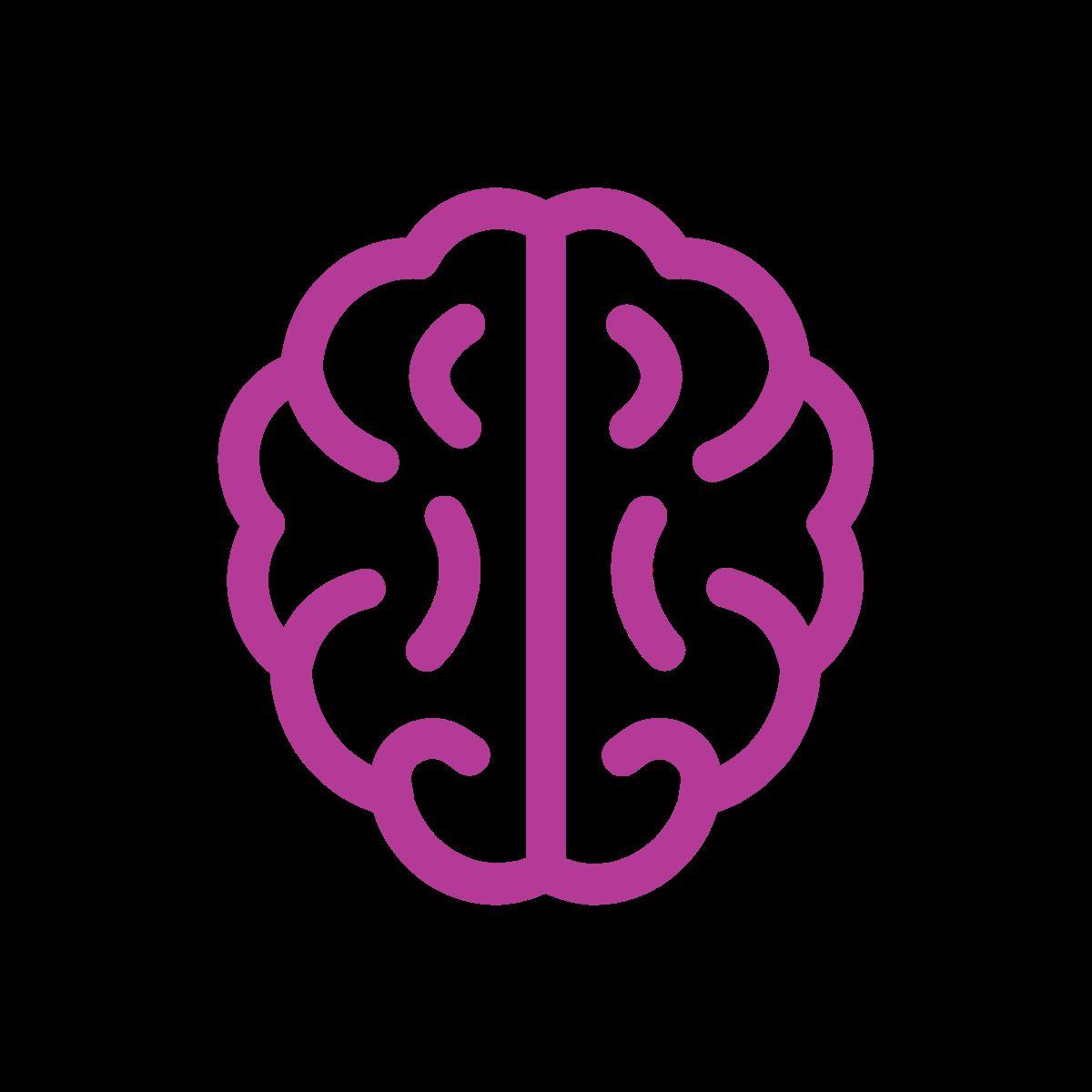

Mindset Practices Experiences
● Focus on remaining open and non-judgemental.
● Believe in your learning and growth potential.
● Be curious and open to new experiences.
● Be observant and commute those observations to insights.
● Reflection - consider and analyze your beliefs and actions.



● Preparation - connect to your mindset, review the materials, and align on your approach
● Application - make sense of what you learned and apply it.
● Immerse yourself often - get out and talk to people!
● Look outside your industry or sphere to those with similar challenges and conditions.
3
Preparation 1


Connect to the Theme

“Innovation - The key to unlocking consumer focus and understanding social needs”

You will have the opportunity to engage with different organizations and leaders with stories to share that we can all learn from.
Your immersions have been crafted to enable insights on the overall theme with the following nuances to focus on analogous industries and organizations:

● A relentless focus on the consumer

● Inspiring change
● Innovation enabling change
5
We have paired each immersion team with hosts whose experience in analogous industries will inspire new thinking on consumer focus and innovating around social challenges.

Immersion Hosts


Your hosts are fully briefed. They know who you are and that you are participating in this program. They will come prepared to share and discuss their experiences. Remember, your hosts are doing this on a goodwill basis and are curious to learn from you as well. They know these exchanges have high value for everyone involved.
It is essential that you prepare.
This part of the immersion book will provide information on your hosts, their organizations, and the context for your pairing. As you read through these materials, please take note of questions and insights to discuss with your immersion hosts.

6
Reflection is Key
As we know, reflection is an important element of Immersion Learning. It is most effective closest to theexperience when ideas and insights are fresh. We will reflect and spend time synthesizing the learning and key insights and how they could impact Ascension and your own leadership journey.
Please keep these sorts of questions in mind as you prepare:
● What insights have you observed about how innovation is critical to improving consumer experience and helping to solve social issues and challenges?
● How will these insights support my work on the pilot projects?
● How will my experience help me become an even more effective vanguard of Ascension’s mission, vision, and values?

As you progress through the immersion, consider the following:

● What are you seeing and hearing that challenges you? Provokes you? Inspires you? Encourages you?
● What one or two insights do you want to understand better to help grow your organization?
7
Reminders

● Exercise your intellectual curiosity and external perspective.


● Leave a great impression – remember you represent your team and organization at each meeting.

● Make sure you are on time for departure.
● Be prepared; be organized.
● Your reflection and dialogue will drive and enhance your learning.
● HAVE FUN!
8
Schedule and Key Contacts

Schedule
Tuesday May 9th
2:15 - 3:15 pm Preparation Session
Wednesday, May 10th
8:30/9:00 - 10:30/11:00 am Immersion 1
12:00 - 1:30 pm Immersion 2 (working lunch)
2:30 - 4:00 pm Immersion 3
Thursday, May 11th
7:45 - 9:45 am Reflection Session
Key Contacts
Greg McMaster - Immersion Lab

greg@immersionlab.com

+1 778 991 7240

9
Team and Host Information



2
Immersion Teams

Team A:
1. Maureen Chadwick
2. Mark Hayes
3. Scott Herndon (Lead)
4. Gagan Singh
5. Tara Vail
Team B:
1. Tom Aloia
2. Michael Griffin
3. Rachel Raymond (Lead)
4. Bob Smith
Team C:
1. Jason Alexander
2. Tracie Loftis
3. Stephan Masoncup (Lead)
4. Aaron Shoemaker
5. Jon Sohn
Team D:
1. Todd Adams
2. Audra Pratt (Lead)
3. Estrellita Redmon
4. Ryan Schuler
Coach: Soren Kaplan
Coach: Michelle Kohler
Guest: Sarah Reddin
Coach: Aaron Ferber
Guest: Greg McMaster

Coach: Tom VanOsdol
Guest: Katie Thenhaus
11
Immersion Day Schedule - May 10th 2023
9:00 – 11:00 am:
“A relentless focus on the Consumer”- An informal discussion with market leaders recognized for their customer centric


8:30 – 10:30 am:
“A relentless focus on the Consumer”- An informal discussion with market leaders recognized for their customer centric approach and culture.
9:00 – 11:00 am:
“A relentless focus on the Consumer”- An informal discussion with high growth organizations recognized for their customer centric approach and culture.

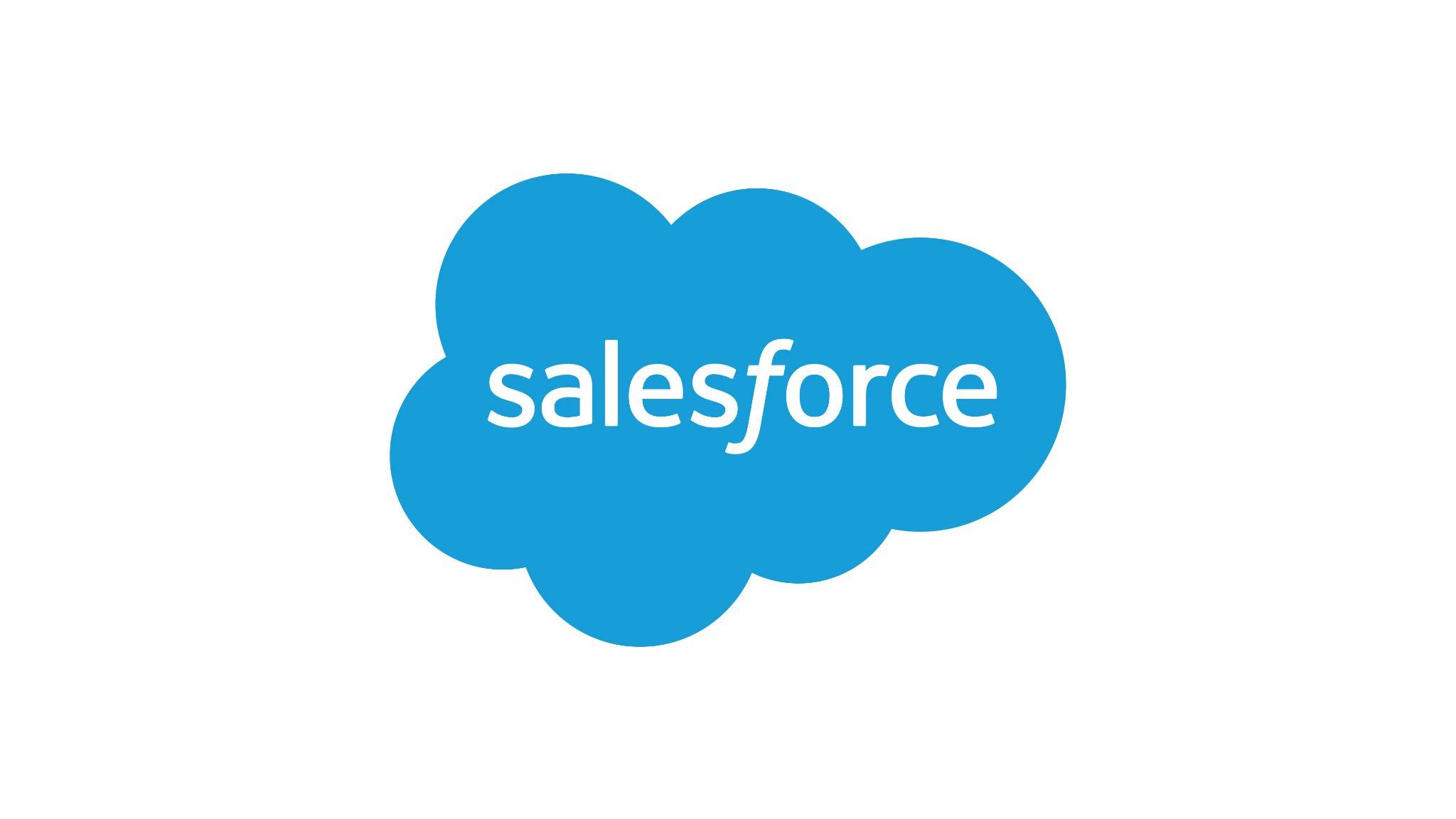
9:00 – 11:00 am:
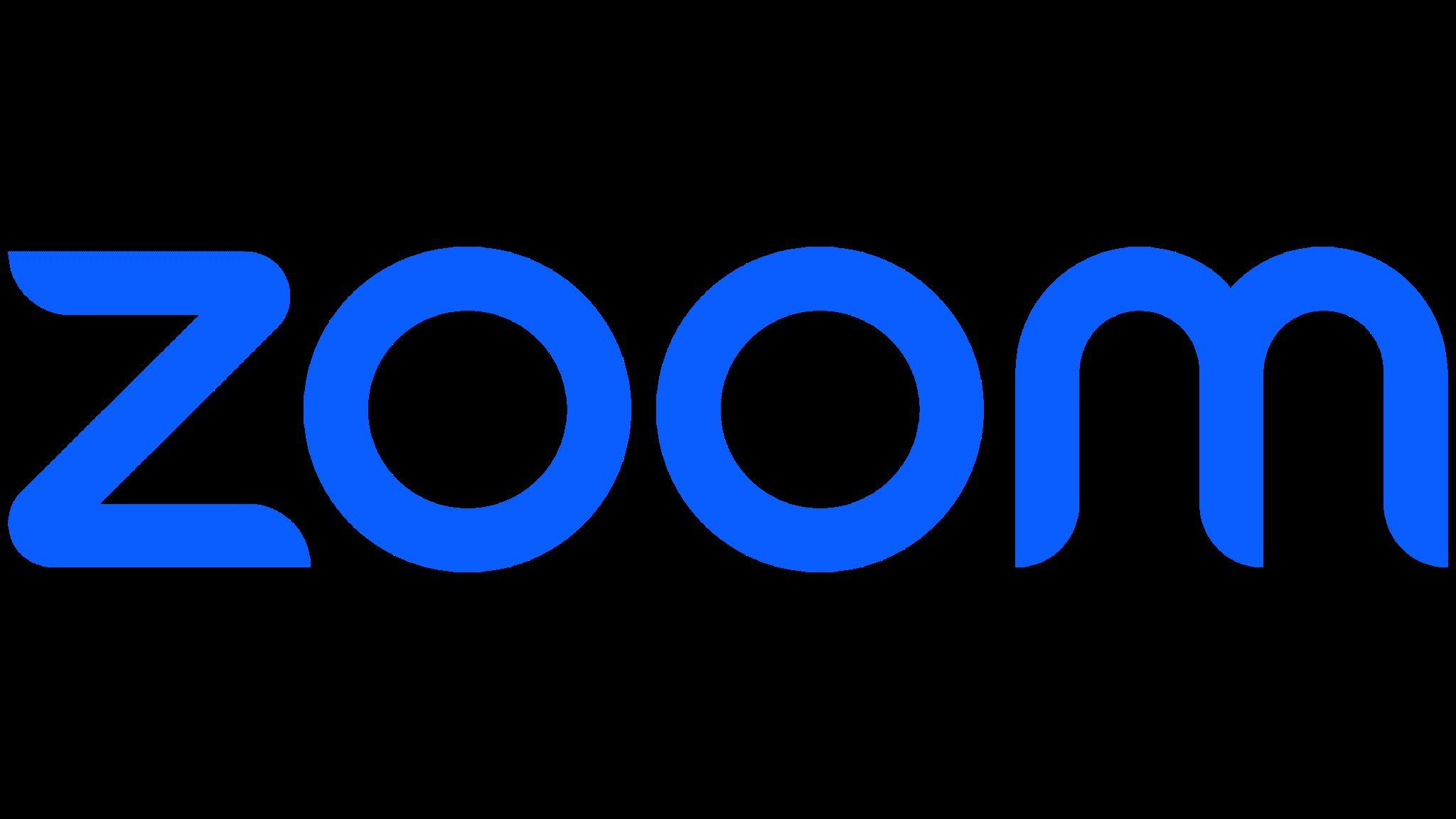

“A relentless focus on the Consumer”- An informal discussion with high growth startups disrupting their industry through a customer centric approach and culture.

12:00 – 1:30 pm:
“Innovation enabling change” - an informal conversation with over a working lunch with social innovators applying new approaches and technologies to solve social challenges (social / environmental / cultural).
11:30 – 1:00 pm:
“Inspiring Change” - A working lunch with innovative social agencies around the bay area to learn more about unmet needs and novel approaches to social issues.
12:00 – 1:30 pm:
“Inspiring Change” - A working lunch with innovative social agencies around the bay area to learn more about unmet needs and novel approaches to social issues.
12:00 – 1:30 pm:
“Inspiring Change” - A working lunch with innovative social agencies around the bay area to learn more about unmet needs and novel approaches to social issues.
2:30 – 4:00 pm:
“Inspiring Change” - Meet with innovative social agencies around the bay area to learn more about unmet needs and novel approaches to social issues.


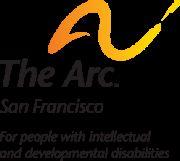
2:30 – 4:00 pm:
“Innovation enabling change” - an informal conversation with social innovators applying new approaches and technologies to solve social challenges (social / environmental / cultural).
2:30 – 4:00 pm:
“Innovation enabling change” - an informal conversation with social innovators applying new approaches and technologies to solve social challenges (social / environmental / cultural).
2:30 – 4:00 pm:
““Innovation enabling change” - an informal conversation with social innovators applying new approaches and technologies to solve social challenges (social / environmental / cultural).
4:30 - 5:30 pm: Teams return to hotel – synthesize learning en route. Immersion debrief on May 11, 2023 from 7:45 – 9:30 am.

 Team A
Team B
Team A
Team B
Depart from hotel lobby at: 7:30 am Depart from hotel lobby at: 7:30 am Depart from hotel lobby at: 8:15 am Depart from hotel lobby at: 7:30 am
Team C Team D
12
Team A



“A
relentless focus on the Consumer” 9:00 - 11:00 am
Rob Lamb
Head of Customer Evangelism, Salesforce Innovation Center



Rob joined Salesforce in June 2002 as a Small Business Account Executive. He is the Founding member of the Customer Success and AppExchange Partner Success Teams.

Rob spent 5 years in the Salesforce Foundation working with Enterprise Higher Education customers (go Pac 12) and 3 years in enablement leading the Salesforce corporate certification company wide.
For the last 5+ years Rob has lived in the Salesforce Innovation center ensuring that Salesforce effectively partners with their topcustomers and account teams!
Rob is a graduate of UC Santa Barbara
14
Peter Allen Vice President, Healthcare Marketing Cloud

Peter Allen is Vice President at Salesforce leading their Healthcare practice. Peter is passionate about leveraging technology to accelerate digital transformation, deliver better care at a lower cost, and improve quality of care delivered for millions of members and patients. He has deep expertise inbusinesscapabilitydrivenITstrategyandvaluerealization.
In addition, Peter is proud to serve as a Board Member of the Los Angeles Ronald McDonald House, an organization that provides comfort, care, and support to children and families dealing with critically ill children as they embrace life and healing with a sense of hope, enthusiasm, courage, and joy.
Prior to Salesforce, Peter worked at IBM where he most recently led the Watson Customer Engagement business across North America for Healthcare and Life Sciences. His team was responsible for delivering solutions for Marketing, Supply Chain, and Commerce that leverage CognitiveAItechnology.
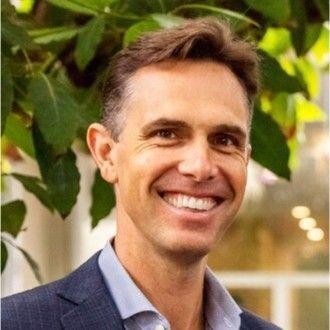

Peter is a graduate of University of California, Berkeley and UCLA Anderson SchoolofManagement.Peterisayogi,marathoner/triathlete,androwedfor UniversityofCalifornia,Berkeley.

15
Salesforce San Francisco
Salesforce has built a company around the principle of understanding customers’ needs. It involves involves concentrating on how every interaction helps the customer, rather than how it helps your business. Putting customers at the heart of everything they do as a business places them in a better position to build relationships, help customers achieve their goals, and increase customer satisfaction.To build a truly customer-focused culture, you first need to ensure to collect disconnected sources of customer data into a single, 360-degree view of the customer, and, of course, then being able to put that data into action to deliver better experiences. Salesforce adopted the following practices:

1. Listen to your customers - To really get to know your customers, put yourself in their shoes and ask what are their needs? What’s driving their decision-making? What are their goals? What are they feeling? Create opportunities for non-customer-facing staff across the business – from the CEO down – to spend time with customers and invite feedback.
2. Make space for ideas - Great ideas can come from anywhere. The role of a leader is not to come up with all the great ideas. The role of a leader is to create an environment in which great ideas can happen.
3. Break down internal barriers - Customer data lives in multiple systems owned by different departments, which leads customers to have a disconnected experience when dealing with your business.

4. Unlock your data - Technologies such as artificial intelligence (AI) and the Internet of Things (IoT) raise the bar for business. Many consumers and business buyers are prepared to pay a premium for differentiated, first-to-market products and services, putting businesses under pressure to get ahead .

5. Appoint a customer-focused advocate - Customer focus can get lost in the day-to-day business of running a business. The Chief Customer Officer role is to be the voice of the customer and ensure that customer focus is maintained throughout your organisation. They use data and research to champion customers’ needs, where teams need to improve their customer focus skills.
6. Create opportunities for learning - Keep employees updated on progress, invite their ideas and feedback, and provide access to resources to help them develop customer-focus skills. Ultimately, by creating a culture where customers’ needs are at the heart of every interaction, businesses create a compelling offer for customers and a significant competitive advantage. Understand what the customer needs to anticipate disruption, or even drive it. As history has repeatedly shown, it’s better to disrupt yourself than drag your heels while someone does it to you. Just ask Blockbuster.
16
Supplemental Information
Articles and Media
● Video: Prudential Consolidates Systems to Focus on Customers When They Need It Most

● Video: How Salesforce is Changing the World: 2021 Year in Review (FY22)
● The Top Features of Salesforce Customer 360

● Putting Customer-Centricity at the Heart of Life Sciences with Salesforce
● Salesforce CMO on Today's C-Suite Priorities, Customer Centricity, and Generative AI
Starter Questions
● Salesforce is recognized as a market leader in creating a customer focused product or service. Can you tell us a bit more about your journey to date at Salesforce?

● What are the drivers and enablers required to foster and promote a culture of customer centricity? (technology, processes, talent, etc.)
● What are the challenges and opportunities of balancing customer centricity and other stakeholder priorities? If you started again, what might you do differently?
● What role does leadership play in ensuring customer centricity, culture, and long-term growth?
17
“Innovation enabling change”

12:00 - 1:30 pm
Team A


Nathalie Collins
Senior Design Director



As a Senior Design Director in IDEO.org’s San Francisco studio, Nathalie inspires teams to push the boundaries of design through exploratory work across sectors. She’s particularly interested in how thoughtful use of technology can facilitate small changes in behavior that shift much larger systems.
Over the past decade, Nathalie has worked with businesses ranging from large corporations to nonprofit startups to introduce more human-centered products and services to the market. Before joining IDEO.org, she led projects at the intersection of hardware and software at Smart Design. Prior to that, she designed the user experiences of Microsoft’s Hotmail and PowerPoint products.
Nathalie has lectured at the Stanford Graduate School of Business, the UC Berkeley Haas School of Business, and facilitated executive workshops at the Stanford d.school. She holds a master’s degree in Product Design from Stanford University and an undergraduate degree in Computer Engineering and Computer Science from the University of Southern California.
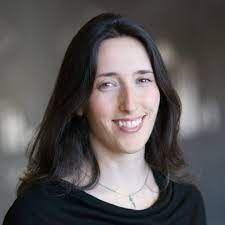
19
Jessa Blades
Managing Director


Jessa is a Managing Director overseeing IDEO.org's U.S. portfolio of work, which focuses on supporting families with young children who are impacted by structural inequity across America. She acts asvision mapper, team builder, partner evangelizer, and design catalyzer.

Before joining IDEO.org, Jessa was a Business Designer at IDEO where she worked at the intersection of strategy, service, and organizational design. She has helped build an affordable and scalable school model in Peru, prototyped business models for consumer health products in Indonesia, and created paths to market for textile producers in Ethiopia.
Jessa has a background in nonprofit strategy consulting and entrepreneurship, has worked in Addis Ababa, London, and Vancouver, and holds an MBA from the University of Toronto's Rotman School of Management.

20
IDEO.org



San Francisco
IDEO.org is a non-profit design and innovation organization founded in 2011 by IDEO, one of the world's leading design firms. The organization's mission is to use design thinking to tackle some of the world's most challenging social problems, particularly those affecting underserved communities. They have a human-centered approach that puts the needs and perspectives of the people they are designing for at the center of their work. Thisapproach involves listening deeply to the needs and aspirations of communities, understanding their challenges and constraints, and co-creating solutions with them.
IDEO.org has also worked with numerous NGOs to develop innovative solutions to social problems. For example, they partnered with the Acumen Fund to develop the Lean Data Initiative, a low-cost, high-quality data collection system that allows social enterprises to gather customer feedback and measure their impact more effectively. In another project, IDEO.org worked with Water and Sanitation for the Urban Poor (WSUP) to develop a sustainable sanitation solution for low-income communities in Kenya. They used design thinking to co-create a toilet that met the needs and aspirations of the community while also being affordable and easy to maintain.
By sharing, teaching, and empowering those working in the social sector to practice human-centered design, IDEO.org is elevating design as a tool to fight global poverty-related challenges.
21
Supplemental Information
Articles and Media
● Video: Design for Social Impact
● Funding social entrepreneurs: why it's time to think local
● IDEO.org Ten Year Impact Report — Stories
● In Our Hands | Project | IDEO.org
Starter Questions
● IDEO.org has a strong mission focusing on innovating and supporting social change. Can you share more about your journey and how you decided to focus on your mission?

● Balancing the vision of your organization and the needs of various investors and stakeholders can be challenging. How do you navigate your team and organization in this environment?
● What have been the enablers and drivers of your success to this point?
● What advice would you have for an organization like Ascension as we strive to embed an even stronger sense of social innovation into our practices?


22
“Inspiring Change”
2:30 - 4:00 pm

Team A


Steffany Dignum Director of Business Development

Steffany moved to San Francisco in 2016 after receiving a Masters in Nonprofit Management from Regis University in Denver Colorado. Upon arrival in the Bay Area, Steffany worked to develop new, and re energize existing, workforce development programs for a community based nonprofit before transitioning to her current position. She has been working as an inclusion and support professional for over 10 years.


In her free time she supports unhoused youth services, film production and does grant writing for artists.

24
Jennifer Dresen
Senior Director, Programs



Jennifer holds a Master of Social Work with a concentration in health and a Master of Public Health focused on community health education from UC Berkeley. She has twenty years of experiencewith people with developmental disabilities, including job support, supported living, and community building in Chicago. In England, she worked as a case manager for adults with developmental disabilities in Surrey County. Jennifer was a supervisor/advocate for Victim/Witness Division of Domestic Violence Court in Chicago and a social worker in the Center for Child Protection at Children’s Hospital in Oakland.
Jennifer has been with The Arc for twelve years. With four associate directors' support, she directs Arc programming: Health and Wellness, Seniors, Life Skills, Residential Services, and Comprehensive Community Services.

25
Melissa Crisp-Cooper
Associate Director of Participant Experience


Melissa is the Associate Director of Participant Experience at The Arc SF, a member of the Board of Directors of CommunicationFIRST, a freelance writer and disability-focused health care advocate. Her moderate athetoid cerebral palsy affects her coordination and speech, and she navigates the world in a purple power wheelchair.

Melissa served on California’s State Council on Developmental Disabilities and helped to interview hundreds of Regional Center consumers near Sacramento as a Consumer Visitor with the Life Quality Assessment Project. She currently serves as Chair of the WITH Foundation’s Self Advocate Advisory Committee.
Ms. Crisp-Cooper received a BA in Human Development from the University of California at Riverside.

26
The Arc San Francisco San Francisco
Since its inception in 1951, The Arc San Francisco has become a primary resource for people with disabilities in San Francisco and San Mateo counties, serving over 800 participants daily. The Arc San Francisco is a collaborative community of participants, families, and Circles of Support working together to provide accessible, inclusive services, and advocating for disability justice. They lead change by sharing knowledge and conducting training and events to broaden disability inclusion throughout the Bay Area.

They are widely recognized for innovation in education and career programs as well as independent living services, health and housing advocacy and a broad range of arts and recreation opportunities. The Arc supports individuals with Autism, Downs Syndrome and other disabilities to meet the challenges of adulthood while achieving personal goals and lifelong success. They have affiliations with over 140 business, education and health partners enabling them to provide successful internships and employment opportunities while offering a more diverse, enriching life experience for the individuals they serve.


27
Supplemental Information
Articles and Media
● Video: Disability, Identity, and Language: A Conversation on Vimeo

● The Arc San Francisco | Let's Talk Autonomous Driving
● New Initiatives : News & Events : The Arc San Francisco


● The Arc San Francisco Raises More Than $180,000 to Ensure Adults with Disabilities Live Richer Lives - Marin Magazine
Starter Questions
● Please tell us a bit about your journey and your current challenges. How has your approach to supporting the community evolved?
● What is the most significant future challenge you anticipate in your journey to meet your goals? What keeps you awake at night?
● What role does innovation play in connecting with and engaging the community?
● What leadership tools and practices support you in reaching your targets and in pivoting through constraint?
● What do you look for to create impactful connections with the community?
28
Team B


“A relentless focus on the Consumer”
8:30 - 10:30 am

Matt Hood
Senior Director


Matt is Senior Director of global food for Real Estate & Workplace Services where he leads Google’s world-renowned Food program, supporting all food service-related activities and initiatives for Google’s global community.
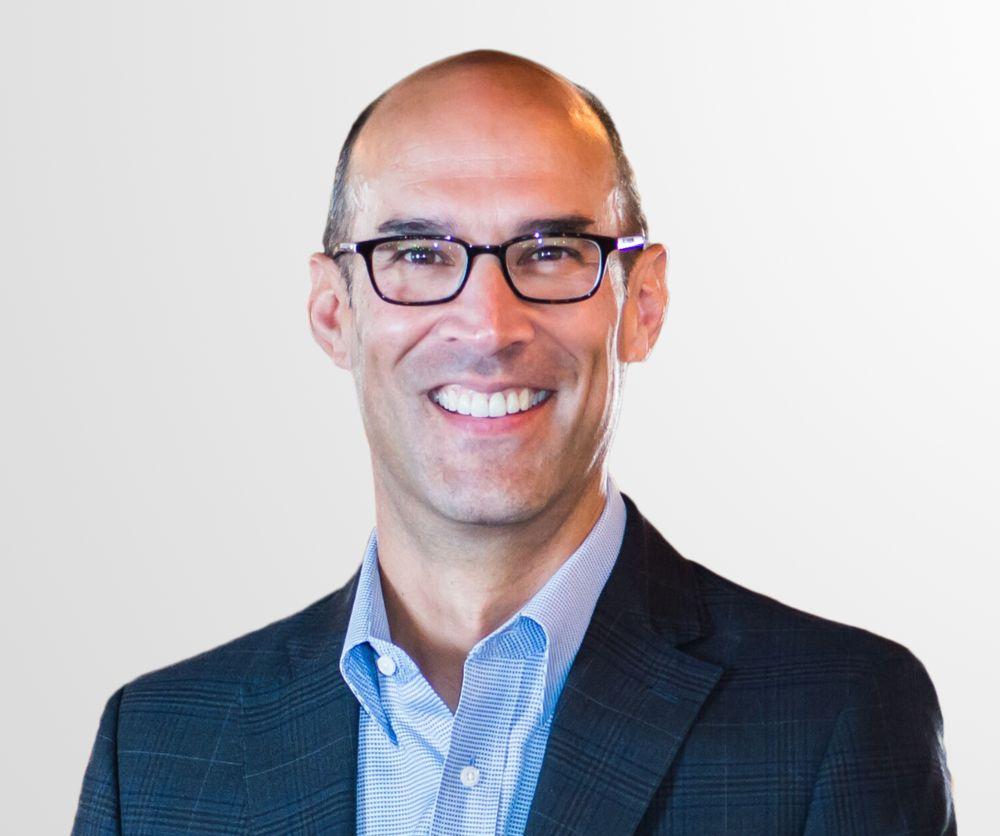

The Food team’s mission is to inspire and enable the Google community to thrive through food choices and experiences. Prior to joining Google, Matt worked in the hospitality industry for over 25 years, most recently in roles as CEO and CMO for international restaurant brands. Matt has served as a board member for multiple private and non-profit organizations including Dine for No Kid Hungry/Share our Strength.
Matt has his undergraduate degree from Texas Christian University and an MBA from Northwestern’s Kellogg School of Management.
30
Google Sunnyvale
If we were to ask you whether your company is customer-centric, you would no doubt answer with a resounding “yes.” There’s a good chance you’re wrong. In Google’s decades of teaching and consulting, they’ve noticed that most companies make four mistakes that prevent them from creating and implementing a winning strategy to acquire, develop, and retain their highest value customers — in other words, mistakes that prevent them from truly being customer-centric.

Mistake 1: Focus too much on “the customer” - you’re conditioned to think of customers as kings, to put them at the center of your efforts. The result? One ends up treating customers as a single, monolithic entity. But not all customers are created equal. Fix 1: Celebrate customer heterogeneity - this starts with a mindset shift: you need to accept that there is a hierarchy of customers, and some are far more valuable than others. Once you’ve made that mindset shift, you can get better at identifying where your existing customers fall on the spectrum,from highest to lowest value.
Mistake 2: A siloed approach - Companies that celebrate customer heterogeneity make another common mistake that prevents them from being customer-centric: - the sales team has one way of measuring a customer’s value, the marketing team has another, both incompatible. Fix 2: Think and act in cross-functional terms - As customers move through the funnel, they will have more touchpoints with different parts of your organization. Develop an organization-wide understanding of what customer-centricity means to your company, and look for opportunities to apply it in every department.
This focus on the customer extends to Google's “Internal” customer also through their relentless pursuit of ensuring the employee experience is second to none and always focused on ensuring the most productive experience possible.

Google is synonymous with the Silicon Valley culture that has fostered some of the most innovative and productive cultures globally. Everything is carefully curated to provide employees with the support and environment they need to thrive including food options rivalling any downtown restaurant, plentiful fitness and social options both onsite and offsite, as well as access to world leading thought leaders. This constant focus on the “Internal” customer has enabled Google to foster its culture of innovation leading to increased growth and a superior customer experience for their “External” customers.

31
Supplemental Information

Articles and Media
● An Introduction to Customer Centricity at Google
● Organizational Culture at Google: A Brief Overview
● Company Culture at Google
Starter Questions
● Google is recognized as a market leader in creating a customer-focused product or service. Please tell us more about how this focus on customer centricity translates internally.


● What drivers and enablers are required to support and promote a culture of customer centricity at Google? (technology, processes, talent, etc.)
● What are the challenges and opportunities of balancing employee experience and other stakeholder priorities?
● What role does leadership play in ensuring Google’s continued customer centricity, culture, and long-term growth?
32
“Inspiring Change”
11:30 - 1:00 pm

Team B


Halley Crumb
As the founder of Retraining the Village and as a Medical Technologist for the Department of Veterans Affairs, Halley had the opportunity to work closely with homeless veterans for over 10 years. During her time at the VA, she recognized that many of the veterans whom she was serving were not only facing dual-diagnosis, but also homelessness. Halley noticed that their will to live and desire for a better lifestyle had gone to the wayside.
This attitude was similar to the one that she had witnessed among homeless individuals in her own community. Halley founded Retraining the Village in 2012 to serve as the bridge between homelessness and permanent housing for veterans, the homeless, formerly incarcerated individuals, and their families.




34
Retraining the Village East Palo

Alto
Homelessness is on the rise. Retraining The Village (RTV) is aware of this problem and believes that stability in housing would relieve some of the stress and help the individuals get back on their feet with case by case management. Halley Crumb founded Retraining the Village in 2012 to serve as a hand up, not a hand out.

Understanding the concept of homelessness is to understand that not one situation is the same as the next. It could have been loss of employment, legal matters, drugs and prescription drug abuse, under educated individuals, and life itself that results in a person being homeless. RTV provides transitional housing, career training, and mental and behavioral health support for people in the community, guiding individuals to reach milestones and thrive. Retraining the Village collaborates with local non-profits in the county that specialize in education, job readiness and placement, and mentoring.
RTV also offers a “whole-patient” approach to the treatment of Opioid Use Disorder (OUD). By offering a combination of peer support, counseling, and medication assistance, the MAT (Medication Assisted Treatment) program is successful at treating OUD and helps sustain recovery long term. In addition, RTV also provides pet-friendly recovery therapy - Halley Crumb, founder of Retraining the Village, saw the powerful effects that her dog, Princess, had on the men in transition. This lead to the creation of Back to the Basics, a pet-friendly residential peer recovery program.

35
Supplemental Information
Articles and Media
● Retraining the Village Second Chance Community Based Adult Reentry Project | Bureau of JusticeAssistance

● Grand Re-opening of Retraining the Village

● Retraining The Village Nonprofit Offers Homeless Men Transitional Housing During Covid-19 PandemicAuthority Press Wire
Starter Questions
● Can you tell us a bit about your journey and what challenges you face now? How has your approach to supporting the community evolved?
● What is the biggest future challenge you anticipate in your journey to meet your goals? What keeps you awake at night?
● What role does innovation play in connecting with and engaging the community?

● What leadership tools and practices support you in reaching your targets and in pivoting through constraint?
● What do you look for to create impactful connections with the community?
36
“Innovation enabling change”


2:30 - 4:00 pm

Team B
Kris Kepler CEO

Kris Kepler, CEO of LavaMaeX, is scaling up the nonprofit’s impact by enabling communities worldwide to deliverRadical Hospitality®,an ethos of meeting people wherever they are with extraordinary care, while bringing mobile showers and other essential care services to the street. Since 2018, the nonprofit has provided expert consulting or seed funding to more than 58 organizations around the globe, with 40 of these starting up from scratch. Promoted to CEO in 2020, Kepler has led LavaMaeX through transformation, innovation and challenges, including the pandemic. At the start of 2020, she guided the organization through a rebranding and pivot that shifted its focus to training others to provide Radical Hospitality, while keeping its fingers on the pulse of the streets through its weekly direct services.

Kepler speaks and writes regularly about how Radical Hospitality restores dignity, rekindles optimism and fuels a sense of opportunity, and about the need for and impact of streetside services. Podcasts with The Christian Science Monitor and The Business of Giving feature her perspective and stories. In a 2021 Sustainable Brands article, she detailed how LavaMaeX and Unilever’s brand The Right To Shower have teamed up to push seed money to grassroots organizations starting up or expanding streetside services. In an Inside Philanthropy opinion piece, Kepler argued for the efficacy of funding grassroots consulting and regranting models, which enable small amounts of funding to have outsize impact.
Drawing on a prior 20-year career as a customer experience designer, Kepler understands how to apply a user-centered mindset to developing products and services for unhoused people, fostering cross- sector collaboration to solve issues affecting them and partnering with cities to galvanize action around hygiene and homelessness. She also gives her team room for creativity and guards against burnout.
Early in the pandemic, she added mental health days to the nonprofit’s benefits and shared her leadership lessons for navigating crises in a Fast Company article.

Kepler joined LavaMaeX in 2017 after volunteering at one of its Pop-Up Care Villages, which bring a fair- like atmosphere to events featuring multiple providers offering a variety of care services. She created toolkits and educational experiences for LavaMaeX-trained mobile care providers in her initial role as senior director of programs and impact,and then was promoted to chief program and strategy officer.

LavaMaeˣ

Alameda

LavaMaeˣ is a non-profit organization that focuses on promoting well-being among people experiencing homelessness by providing mobile showers and other essential services. However, they also deliver services on the streets of San Francisco, Oakland, and Los Angeles with their Radical Hospitality® approach, which involves meeting people wherever they are with extraordinary care to restore their dignity, optimism and sense of opportunity.
In terms of innovation, LavaMaeˣ is constantly seeking new and creative ways to make a positive impact on thelives of people experiencing homelessness. They have developed an innovative and scalable model that has inspired others around the world to replicate their approach. They also work with local partners and community organizations to identify the specific needs of unhoused individuals and create customized programs to meet those needs.
LavaMaeˣ also collaborates with businesses, governments, and other non-profit organizations to expand theirreach and bring their services to more people in need. For instance, they have partnered with the city of San Francisco to create Pop-Up Care Villages, where they offer a range of services, including showers, laundry, and haircuts, all in one location. They have also worked with companies like Google and LinkedIn to bring mobile showers and other services directly to their employees.

Supplemental Information
Articles and Media
● Video: Choosing to See the Invisible | Doniece Sandoval | TEDxBerkeley
● Video: Bringing Mobile Shower Trucks to San Francisco's Homeless
● Mobile shower units help homeless on streets of San Fransisco - Smiley Movement
● This organization started offering free showers to homeless people in SF. Now it's inspiring a movement
● Kris Kepler: On Radical Hospitality and Unexpected Leaders
Starter Questions
● LavamaeX has a strong mission with a focus on innovating around a large global societal challenge. Can you share more about this journey and on the firm's decision to both deliver services and to train others on howto deliver these services.

● Balancing the vision of your organization and the needs of various investors and stakeholders can be challenging. How do you navigate your team and organization in this environment?
● What have been the enablers and drivers of success to this point? Can you speak to this both personally and postionaly?
● What advice would you have for an organization like Ascension as we strive to imbed an even stronger sense of social innovation into our practices?


Team



C “A relentless focus on the Consumer” 9:00 - 11:00 am
Heidi
West Head of Healthcare
Heidi is a sales professional with over 25 years of successful experience connecting technology and the healthcare industry. As a strategic leader, her vision starts with architecting an end state plan.
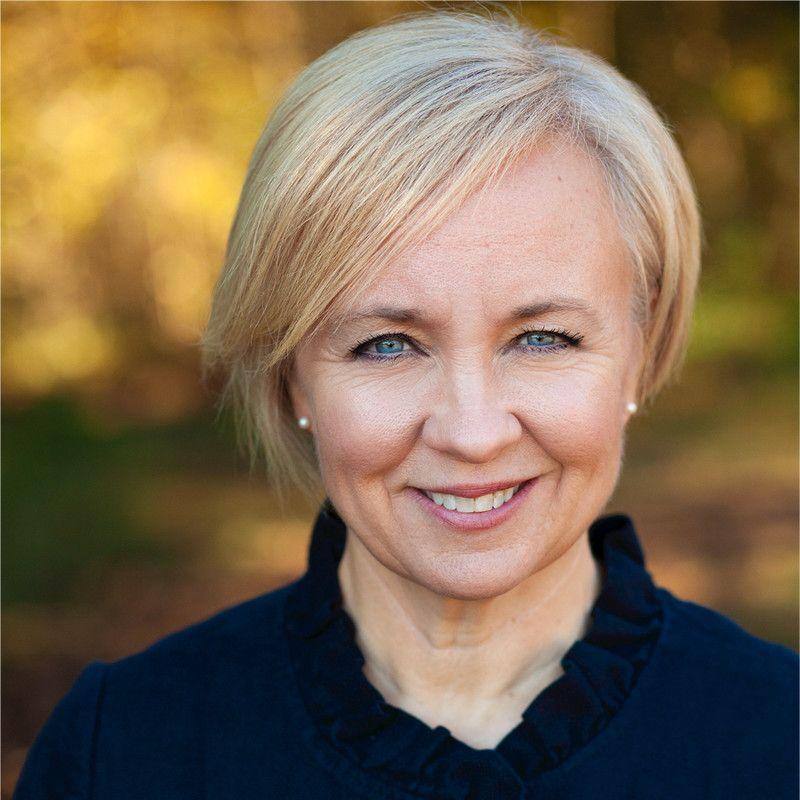

Execution starts with the recruitment of top grade talent, building a partner and marketing plan, operational excellence, driving a collaborative team environment with transformational sales methodologies and focus on branding initiatives. Her results include a track record of achieving individual goals as well as building highly successful and integrated teams.


Matthew Saxon

Chief People Officer

Matthew is an experienced HR executive leader with a proven track record of delivering tangible business outcomes through managing change, leading teams, partnering with senior management to deliver critical business initiatives and implementing practical solutions to support business strategies. He has achieved this by deeply understanding what companies want to achieve, focus onthe critical few areas that accelerate the vision, and then partnering with stakeholders at all levels while empowering and inspiring my own team to deliver exceptional results.
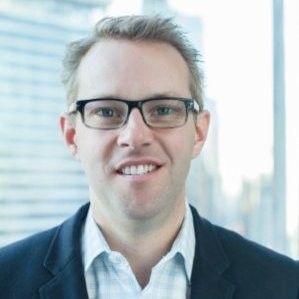
Matthew doesn’t consider himself an "HR person," but rather a business leader who can greatly impact a company from strategic planning through operational execution via its people. He likes to understand how a business works from a multitude of perspectives and possess a healthy curiosity to constantly ask why. He is passionate about what he does and asks strategic questions to help focus on the real things that make the most impact with those he works with.

Michael W. Lam
Head of Product



Michael is a seasoned software developer and engineer with a passion for creating innovative solutions. With over 10 years of experience in the industry, he has honed his skills in a variety of programming languages and frameworks, including Java, Python, and React.
As a natural problem solver, Michael loves taking on new challenges and finding creative ways to overcome obstacles. His expertise in software design and development has helped him to successfully lead cross-functional teams on complex projects, delivering high-quality products on time and within budget.
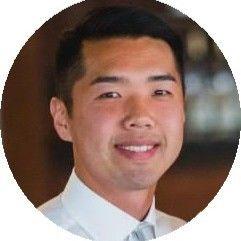
Felipe Henao ZOOM Room Specialist

Felipe is a strategic marketing and communications professional with over 10 years of experience driving successful campaigns for a variety of organizations.



With a proven track record of creating effective brand messaging and executing multi-channel marketing strategies, Felipe hashelped to significantly increase brand awareness and engagement for both small startups and established corporations. His expertise in social media, content creation, and event planning has helped him to successfully lead cross-functional teams and collaborate with stakeholders at all levels.
Felipe is passionate about leveraging technology and data to inform his marketing decisions and ensure the highest ROI for his clients.
Zoom San Jose
Zoom is a video conferencing software that has become essential in the age of remote work and virtual events. Founded in 2011, the company has grown rapidly in recent years, with its platform now used by millions of people around the world. With features like screen sharing, virtual backgrounds, and recording capabilities, Zoom has revolutionized the way people communicate and collaborate online.
Competition in the video conferencing space is fierce, with companies like Microsoft Teams, Google Meet, and Cisco Webex all vying for a slice of the market share. Despite this, Zoom has managed to stand out from the crowd by prioritizing the customer experience. Zoom introduced a new "Zoom Phone" service, which allows users tomake phone calls using the Zoom platform. This service was developed in response to customer feedback, as many users wanted a more seamless way to make calls without having to switch between different apps. They’ve also introduced new features like the "Zoom for Home" service, which is designed for people who work from home and need a dedicated space for video conferencing. This service includes a range of features such as virtual backgrounds, touch screen displays, and whiteboarding tools. These features make it easier for users to collaborate and communicate effectively, which is particularly important in today's remote work environment.
Zoom has also differentiated itself from its competitors by providing a reliable and stable platform. This has been especially important during the pandemic when millions of people around the world rely on video conferencing software to stay connected with their colleagues, friends, and family.


With the ongoing shift towards remote work and virtual events, Zoom is poised to play a critical role in the futureof work and communication.

Supplemental Information
Articles and Media
● How Zoom Built a $20B Brand Off The Back of Customer Experience - Chattermill


● Why is Zoom so popular? 3 Strategies Behind Zoom’s Growth

● Zoom Marketing Strategy: The Rise & Fall of Zoom Video Conferencing
Starter Questions
● Zoom is recognized for disrupting the virtual meeting industry by focusing on the customer. Please tell us more about this journey.
● What drivers and enablers are required to foster and promote a culture of customer centricity? (technology, processes, talent, etc.)
● What challenges and opportunities have you encountered as you adapt and transform for continuedgrowth?
● What role does leadership play in ensuring customer centricity, culture, and long-term growth?
“Inspiring Change”
12:00 - 1:30 pm

Team C

 Kelly Vazquez Chief Programs Officer
Kelly Vazquez Chief Programs Officer
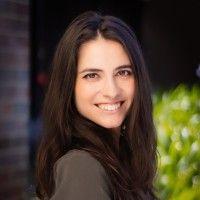

Kelly began with HomeFirst as as the Director of Veteran Services. She was involved in outreach, emergency shelter, transitional housing, rapid re-housing, permanent supportive housing, and homelessness prevention for Veterans in Santa Clara County. In 2021, she moved into the role of VP of the Permanent Housing Division and in 2022, became the Chief Program Officer.
The key programs and services at HomeFirst focus on emergency and permanent housing. Kelly’s background has also helped HomeFirst offer the most comprehensive services for homeless veterans in the County, including mental health counseling, employment placement, emergency shelter, transitional housing, and support for families of veterans who are at risk of homelessness.

Prior to joining HomeFirst, Kelly had several Community support roles that included promoting wellness among low-income households accessing food pantry services as well as supervising over 200 volunteers for a Community Resources Program.
Kelly has a Bachelor’s Degree in Social Work from San Jose University.

René Ramirez
Chief Operating Officer

René joined HomeFirst in May 2015 and oversees client services and operations. He has spent nearly 25 years supporting youth, families, and communities in Santa Clara County.
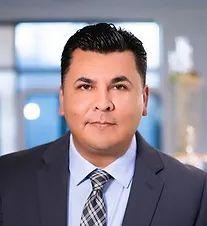


René began his career with the City of San Jose's Parks, Recreation, and Neighborhood Services division before joining the Silicon Valley Education Foundation (SVEF) where he spent 11 years. During his time at SVEF he served as Vice President and was responsible for building and launching early education and STEM programs. Most recently, René served as the Director of Programs for the Alum Rock Counseling Center, where he led the development and implementation of the agency's children and family services at two office sites and more than 50 schools.
René holds a BA in Psychology from San Jose State University and currently serves as board president for Sunday Friends, a local non-profit charged with empowering families to break the generational cycle of poverty.
HomeFirst Milpitas
With more than 40 years experience, HomeFirst™ is a leading provider of services, shelter, and housing opportunities to the homeless and those at risk of homelessness in the Bay Area of California. They serve morethan 5,000 adults, veterans, families, and youth each year through a continuum of care which includes prevention, outreach, shelter, interim and permanent housing programming. By practicing Housing First and harm reduction models of service they relentlessly focus on eliminating barriers to housing and creating stability for everyone they serve. HomeFirst is a leading provider of Services, shelter and housing opportunities to the men, women and children who are currently homeless or at imminent risk of homelessness in Santa Clara County.


The organization's goals are based on a business model that identifies three areas that encompass the scope of the organization's work: emergency shelters; year-round shelters, seasonal cold weather shelters and emergency services/supportive services; case management services, vocational and housing services, as well as outreach, mental health and veterans' care. In addition they assist with transitional and permanent housing including property management of four locations. The locations include Boccardo Reception Center which is the County's largest emergency shelter with an overnight capacity of 250 adults, four overnight warming locations within the limits of the city of San Jose, and the Menlo Park site which provides intensive care for veterans with special needs.

Supplemental Information
Articles and Media
● Video: HomeFirst Services Outreach Team and Andrea Urton on KPIX5 on 8/13/21 6pm


● HomeFirst to operate the Sonoma County Continuum of Care’s Coordinated Entry System

● Shaw: What's next for homeless people after the storms? - San José Spotlight
Starter Questions
● Please tell us a bit about your journey and your current challenges. How has your approach to supporting the community evolved?
● What is the most significant future challenge you anticipate in your journey to meet your goals? What keeps you awake at night?
● What role does innovation play in connecting with and engaging the community?
● What leadership tools and practices support you in reaching your targets and pivoting through constraint?
● What do you look for to create impactful connections with the community?
“Innovation enabling change”

2:30 - 4:00 pm
Team C

 Wendy Gonzalez
Wendy Gonzalez
CEO


WendyGonzalezistheCEOofSamawhoprovideshighqualitytraining data to power AI technology, used by leading technology companies such as Walmart, Google, NVIDIA, GM, and Getty. Under Wendy’s leadership, Sama has achieved three-year revenue growth of 134% and gained recognition on the Inc. 5000 list as one of America's fastest-growing private companies. The company was also recently namedoneofthemostpromisingAIcompaniesintheForbesAI50list for2021.

Prior to taking on the role of CEO, Wendy spent five years at Sama as COO,andisanactiveBoardMemberoftheLeilaJanahFoundation.As CEO, she is one of few female leaders within the male-dominated AI industry. With two decades of managerial and technology leadership experience, Wendy is an executive passionate about building high-performing, high-functioning teams that develop and scale innovative,impactfultechnology.
A thought leader in the AI and tech industry, Wendy has undertaken several conference and speaking opportunities, including The WomenTech Network, UpTech Report, Lean Startup Week, Digital TrendsLive,ForbesBooksRadioandTechFirst.
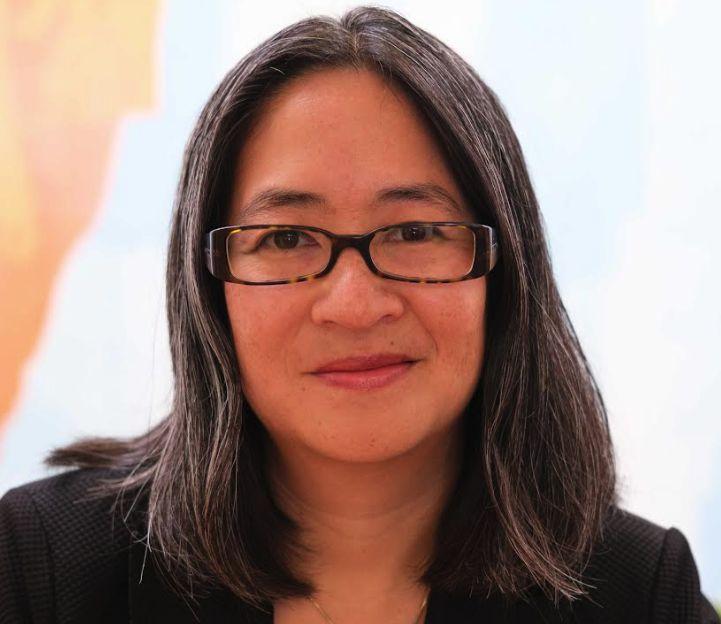
SAMA San Francisco
Since SAMA’s founding in 2008, the firm has pioneered new technologies and business methods that harness the power of markets for social good, meaningfully improving employment and income outcomes for those with the greatest barriers to formal work. SAMA’s impact prioritizes creating conditions for team members and communities to thrive, minimizing its effect on the planet, and working with customers to help them achieve their own impact goals.

Sama believes responsible actions lead to positive impact, it has a duty to put people and the planet at the core of everyday business decisions. SAMA’s model, and its goals, helps it to be socially accountable to itself, its customers, and the world. Responsibility is a journey, and SAMA is committed to being purposeful in its approach at every step along the way.

● People: Responsibility to people means creating conditions that allow SAMA’s team members and their communities to learn, work and thrive.
● Planet: Responsibility to the planet means actively working to minimize SAMA’s negative impact on the planet by minimizing waste and advancing climate actions strategies through a human-centered approach.
● Customers: Responsibility to customers means aligning to advance common social impact andsustainability objectives.

Supplemental Information
Articles and Media
● Wendy Gonzalez named TOP 100 Executive Women in Tech to Watch
● Sama Wins 2023 Business Intelligence Group Innovation Award

● AI 50 2021: America’s Most Promising Artificial Intelligence Companies
Starter Questions
● Sama has a strong mission focusing on innovating around a large challenge. Can you share more about this journey and the firm's decision to focus on improving employment and income outcomes for those with the most significant barriers to formal work?
● Balancing the vision of your organization and the needs of various investors and stakeholders can be challenging. How do you navigate your team and organization in this environment?
● What have been the enablers and drivers of your success to this point?
● What advice would you have for an organization like Ascension as we strive to embed an even stronger sense of social innovation into our practices?


Team D



“A relentless focus on the Consumer”
9:00 - 11:00 am
Sangeeta Chakraborty
Chief Customer Officer

Sangeeta Chakraborty is the Chief Customer Officer at Miro, the leading online whiteboard designed for distributed team collaboration. Sangeeta has a passion for customer success, with a strong track record of executing customer and go-to-market programs and building global high performing cultures. Prior to joining Miro, Sangeeta was the Vice President of Customer Success at Okta, where she assisted global organizations to help accelerate their cloud adoption and achieve success in their zero trust initiatives. Prior to that, she was the SVP of Customer Success Officer at Checkr, helping customers such as Uber, Lyft, and Doordash and others become successful in the new world of work by bringing speed, fairness and transparency to their hiring. In her career, Sangeeta has held senior level customer success positions at Symphony AyasdiAI (acquired by Symphony), Accela (acquired by Berkshire), VMware, Digital Fuel Technologies (acquired by VMware), and InQuira (acquired by Oracle).
In addition to her role at Miro, Sangeeta serves as a strategic advisor to other technology companies including HeadsUp and Blameless. She is also a founding investor in Neythri Futures Fund, which positions South Asian women front and center as key investors and stakeholders and offers an opportunity to amplify their influence and catalyze innovation.

Sangeeta is based in Miro’s U.S. co-headquarters in San Francisco. She graduated from the National Institute of Warangal with a Bachelor’s Degree in Computer Science and received an M.B.A. from the UC Berkeley Haas School of Business.


Miro
San Francisco
Founded in 2011 with more than 1700 employees in 12 hubs around the world. Miro offers a collaborative whiteboard platform that is designed to allow distributed teams to work effectively together. Miro brings the benefits of a collaborative whiteboard session to everyone in a global company regardless of their location with a secure and scalable solution. With over 7 million users and 20,000 paying customers. Miro is co-headquartered in San Francisco and Amsterdam, serving more than 35M users worldwide, (including 99% of the Fortune 100).
Miro’s business model is based around a Product-Led Growth Strategy. It has helped them to onboard and retain users and customers. It drives acquisition, drives their viral loops, and word of mouth whilst building their acquisition competitive muscle. Similarly, product-led growth leads to more monetization. With a higher retention rate and increased engagement, the amount of monetization touchpoints that customers come into contact with has also improved.


While Miro’s success feels like it happened overnight they spent time laying a strategic foundation by investing heavily in identifying and understanding their users and use cases and designing simple, intuitive, and supportive experiences. From there, they believed in the value of their product and trusted that users would too. The market has spoken, and for now Miro is the premiere digital collaboration tool for brainstorming and ideation.

Supplemental Information
Articles and Media
● Video: How To Transform Collaboration Between Enterprise Teams

● Miro’s latest funding round has made the productivity app worth billions - Protocol
● The hybrid collaboration field guide
Starter Questions
● Miro is recognized for identifying and working towards filling an unmet need by focusing on the customer. Please tell us more about this journey.

● What are the drivers and enablers required to create a culture of customer centricity in the agileenvironment of a startup? (technology, processes, talent, etc.)
● What challenges and opportunities have you encountered as you adapt and test the market?
● What role does leadership at Miro play in ensuring customer centricity, culture, and growth?

“Inspiring Change”
12:00 - 1:30 pm

Team D


Nils Behnke
Chief Executive Officer
Prior to joining St. Anthony’s as CEO in 2020, Nils spent more than a decade as a donor, volunteer, Board member and President. He is deeply committed to furthering St. Anthony’s impact serving vulnerable populations experiencing homelessness and poverty, and passionate about their Franciscan values, mission, and history.


Nils brings growth-oriented leadership acumen to the role of CEO. Formerly working in the private sector, he held prominent senior roles at leading management consulting firms Bain & Company and McKinsey & Company, and the role of CEO for a private biotech company.

Nils earned his PhD and Master’s degree in Economics from the University of Cologne.

Tere Brown Chief Operating Officer
Tere Brown is the Chief Operating Officer at St. Anthony’s. She brings with her decades of commitment to the community, spending eighteen and a half years as the Chief Program Officer of Catholic Charities SF. She is passionate about providing leadership in an organization committed to improving the lives of others through positive social impact.
She holds a Master’s degree in Non-Profit Management from the University of San Francisco.
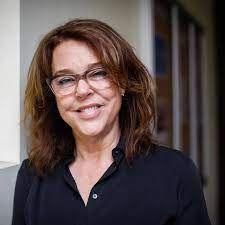



Sally Haims Chief of Marketing and Communications
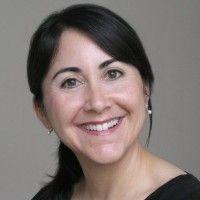



Sally Haims is passionate about sharing stories to help mission-driven organizations raise awareness that drives engagement. A news junkie by nature, she began her professional life at age 12 by pitching journalists to cover events at St. Joseph’s Elementary School in Alameda. There she had the pivotal experience, like many lucky Bay Area youth of volunteering at St. Anthony’s Dining Room. She is very excited to be back to help continue spreading the word about the Foundation’s compassionate work helping guests to develop the skills to build stability.
Although her backhand is not the weapon it once was, she played tennis for U.C. San Diego and graduated with a degree in MassMedia Communications. Her career spans the private, nonprofit, and public sectors where she managed communications for The Body Shop, Americas Region, The Salvation Army Golden State Division, New York City’s Administration for Children’s Services, and the New York State Senate majority leader.
Marti Sullivan
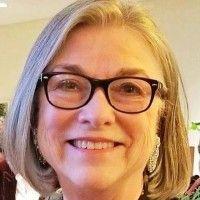
Chief Advancement Officer


Marti Sullivan has been raising funds and awareness for educational and human services organizations for over 32 years. She spent 16 years at her children’s schools, Schools of the Sacred Heart, San Francisco, raising over $35M in annual and capital funds during her tenure as Director of Development & Alumni Relations, leading to campus expansion and the establishment of Stuart Hall High School. She then spent 6 years at Catholic Charities as Director of Development & Communications, where she was first introduced to St. Anthony’s Fr. John Hardin while celebrating CC’s Centennial in 2007. She led a multi-year fundraising strategy that included raising over $25M in annual and capital funds, planned and major gifts.
In 2011, she joined The Arc San Francisco as Chief Development Officer. The Arc SF supports 850 adults with developmental disabilities in continuing education, socialization and recreation, wellness, workforce development and job placement. The Arc is also a St. Anthony’s Community Safety Services client. Marti retired from The Arc SF in 2021, having raised over $17M.
Marti has spent the last 18 months as an independent Development and Communications Consultant, most recently supporting St. Anthony’s in a year-end Major Gift effort. During that assignment, she became familiar with St. Anthony’s innovative and dedicated work supporting those most in need, and in particular, the Companionship Model of Care. After volunteering at Leading the Way, getting to know their programs, and their Development and Communications teams, she enthusiastically accepted the position of Chief Advancement Officer.
 David Watterson
David Watterson
Corporate Relationships Manager
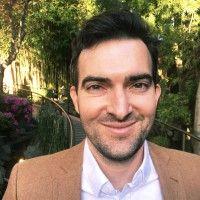



David leads St. Anthony’s efforts to recruit, deepen, and sustain relationships with local and national businesses. He joined St. Anthony’s in 2015 and has also served as the program manager to the Free Clothing Program and Hygiene Hub services, collectively serving over 10,000 individuals and families per year.
He holds a Master of Public Service degree from the Clinton School of Public Service.
St. Anthony Foundation San Francisco
St. Anthony's Dining Room opened its doors on October 4, 1950, with the goal of serving 150 meals on the first day. However, the community's need for support far surpassed expectations, with 400 meals served that day alone. Since then, St. Anthony's has become a pillar of the community, providing over 47 million meals and serving up to 1,500 plates of food daily.
Known as the "hands below the safety net," St. Anthony's offers a comprehensive range of social services to support the most vulnerable populations in the Bay Area. Their services are divided into three pillars: Essential Services, Health Care, and Care Integration. Essential Services include food, clothing, hygiene, and safety, while Health Care comprises a medical clinic and fair access to care. Care Integration includes Companionship, Workforce Development, Transitional Employment, and Women's Services in the future.


St. Anthony's Essential Services provide critical resources for those in need, including their Free Clothing Program, which distributes approximately 350,000 clothing items annually. Additionally, their Hygiene Hub provides 11,000 showers and 7,500 loads of laundry each year. Their Medical Clinic serves around 2,500 individuals and families, with over 9,000 visits annually.
St. Anthony's Companionship Program is a standout initiative that offers long-term peer support for individuals in substance use recovery and transitional employment programs. This program, along with mental health care, medical care, job opportunities, and economic empowerment, is part of their Care Integration pillar. The Companionship Program serves as a model for others in San Francisco and beyond, based on best practices from around the world.

Supplemental Information
Articles and Media

● Video: St. Anthony Foundation – Leading the Way with Hope, Stability and Renewal

● St. Anthony's distributes nearly 3,000 Thanksgiving meals to those in need - CBS San Francisco
● SF Nonprofit Wants To Permanently Close Tenderloin Street for a 'Green Oasis'
● Facing Brutal Storms, Homeless People Encountered Hurdles to Finding Shelter
Starter Questions
● Please tell us a bit about your journey and your current challenges. How has your approach to supporting the community evolved?
● What is the most significant future challenge you anticipate in your journey to meet your goals? What keeps you awake at night?
● What role does innovation play in connecting with and engaging the community?

● What leadership tools and practices support you in reaching your targets and pivoting through constraint
● What do you look for to create impactful connections with the community?
“Innovation enabling change”

2:30 - 4:00 pm
Team D

 Lauren Hall Executive Director
Lauren Hall Executive Director
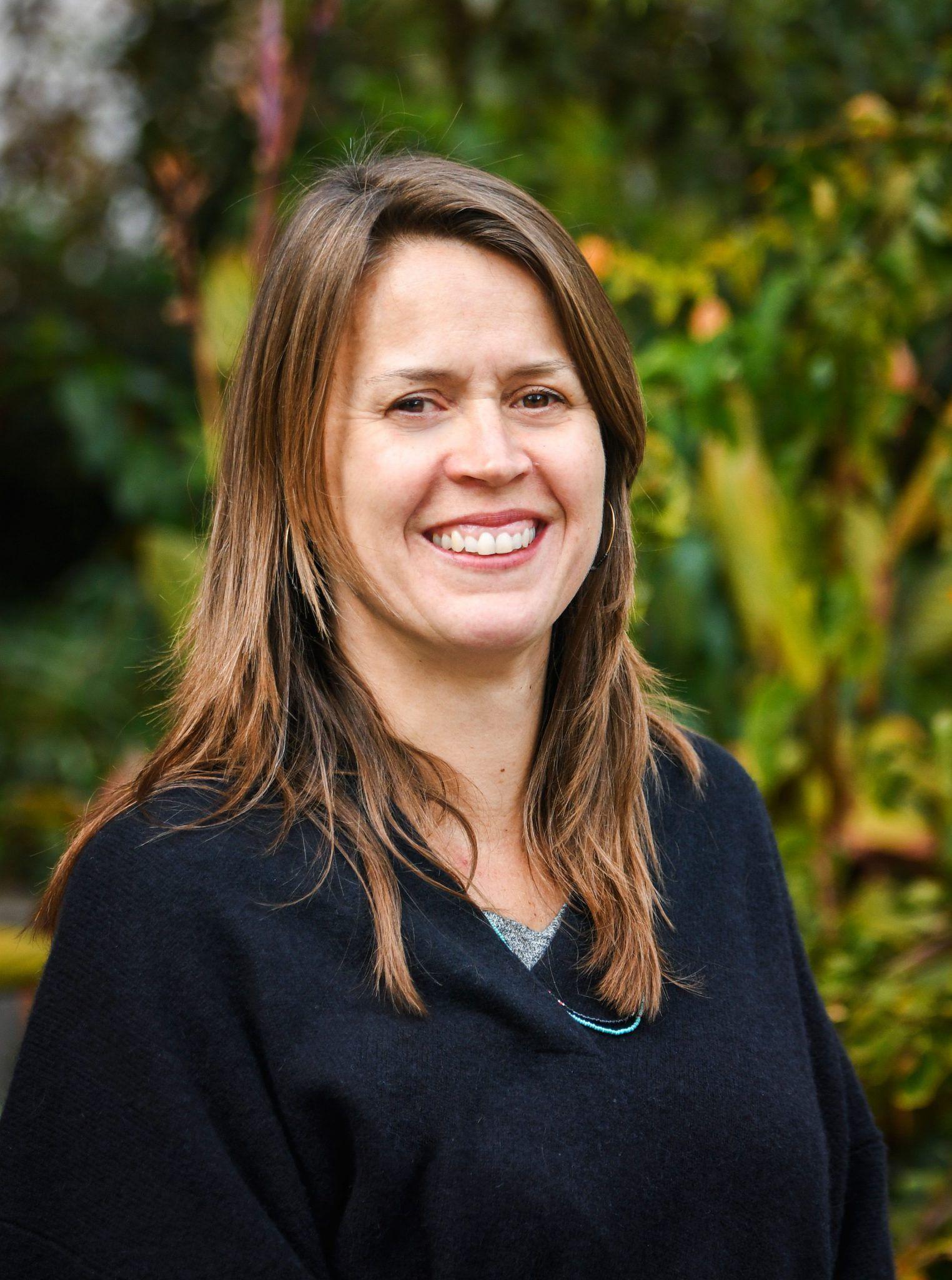

As a co-founding Director of DISH, Lauren is a relentless believer that Everyone Deserves a Home. She has worked in and around supportive housing starting in 1994 as a case manager working with adults experiencing homelessness and quickly became an early advocate for harm reduction in housing. Lauren has supported local and national organizations to create permanent supportive housing for transition-aged youth, families, and homeless adults as a Program Manager at the Corporation for Supportive Housing and as an independent consultant.

In 2006, with the incredible support of the San Francisco Department of Public Health, she co-founded Delivering Innovation in Supportive Housing with the goal of creating an organization focused on equity, inclusion, and welcoming vulnerable San Franciscans home. She deeply values her education from over 25 years of service in the community.
Lauren graduated from the University of Michigan with a BA in Psychology.

DISH San Francisco
DISH (Delivering Innovation in Supportive Housing) was started in September 2006 by Directors Lauren Hall and Doug Gary initially to provide property management services for the Direct Access to Housing Program, a project of the San Francisco Department of Public Health.



DISH’s guiding principle is to be a small organization dedicated to serving adults with complex health, mental health, and substance use issues in supportive housing, and it is their goal to be a strong partner in the City’s effort to end homelessness in San Francisco. They believe in harm reduction as a vital approach to successful supportive housing, meeting their tenants where they are when they move into their buildings, without expectation or judgment, and helping them stay housed.
A constant focus on innovating to meet the needs of a changing community and client are central to DISH’s mandate. They believe that focusing on innovation will better enable them to remain agile and provide the best housing options and community development programs when other agencies are not able to pivot. According to the Corporation for Supportive Housing (CSH), a national leader in the field, effective property management is not the norm, and DISH has become a model for this innovation nationally.
Examples of DISH innovations include creating and delivering training curriculum on housing operations, eviction prevention, improving the partnership between support services and property management, harm reduction, leadership and supervision, customer service and tenant satisfaction, staff development and morale, community building, organization planning, and success measurement. DISH has worked hard to become not only a leading agency but a national thought leader on how the homeless situation should be addressed.
Supplemental Information
Articles and Media
● Video: Meet Julia, one of DISH's Trekkers
● 2021 Annual Report - DISH SF
● Eric Moves On - DISH SF
● Delivering Innovation in Supportive Housing (DISH) | Stanford Graduate School of Business
● Evictions of Formerly Homeless People Prompt Scrutiny From Supervisors
Starter Questions
● DISH has a vital mission of delivering innovation in supportive housing. What are you doing differently to innovate and break the cycle of homelessness?

● Social needs only sometimes benefit from the level of innovation observed in Silicon Valley. How do you embed this culture and focus on innovation within your organization as you compete with other traditional innovation powerhouses like Google and Apple?
● Balancing your organization's vision and key stakeholders' needs can be challenging. How do you navigate your team and organization in this environment?
● What advice would you have for an organization like Ascension as we strive to embed an even stronger sense of social innovation into our practices?

































 Team A
Team B
Team A
Team B





























